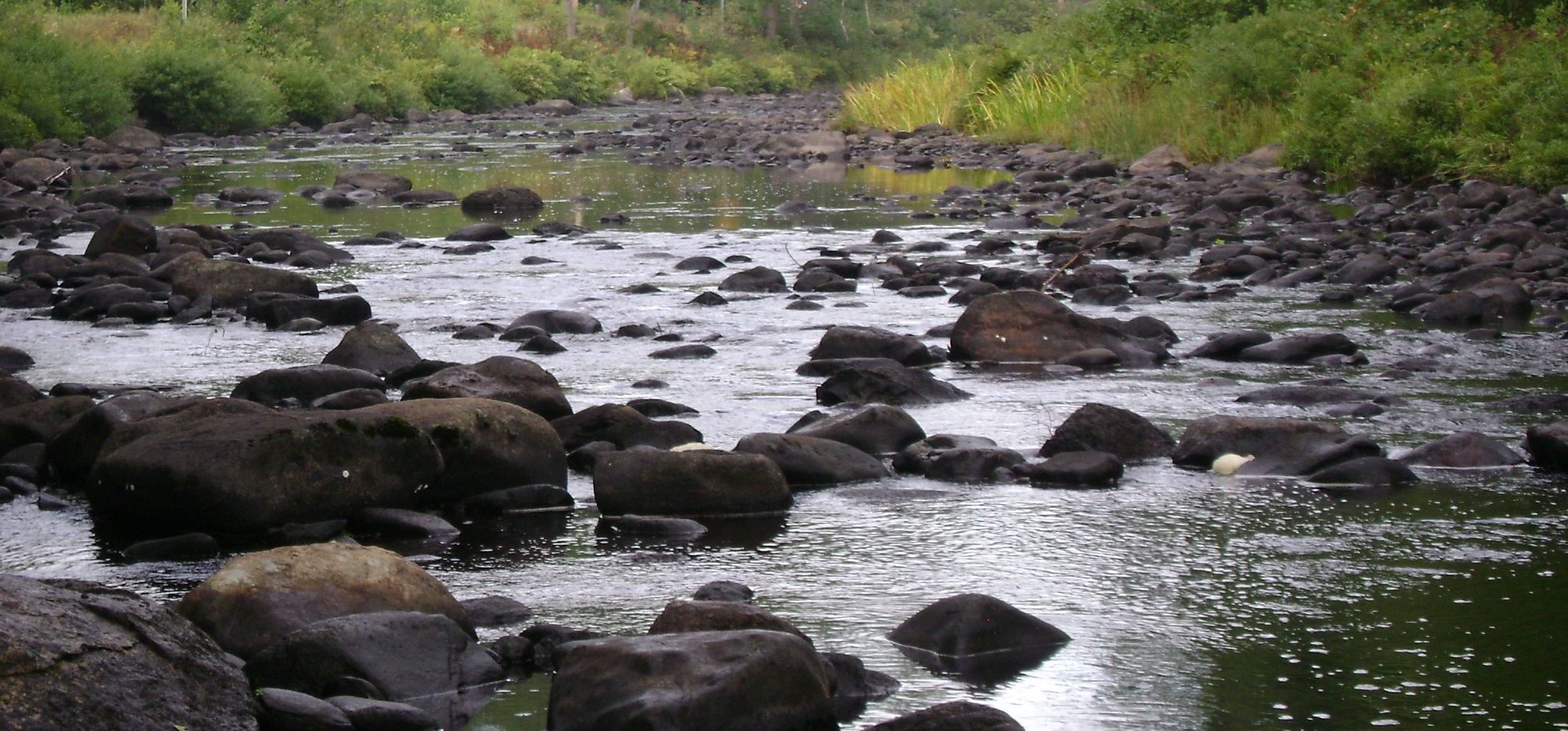Droughts happen. When they do, most of the talk is about how they impact the water supply for humans. But droughts also affect fish. In dry years and wet ones alike, the story of trout here in New Hampshire and elsewhere always comes back to trees. A landmark scientific paper from 2005 rightly proclaimed that "the riparian zone is fish habitat.” Riparian areas are the lands that are next to a waterbody, not in the water. What? Fish can live out of the water...on land? No, of course not, but fish habitat is shaped by riparian vegetation and a tremendous amount of the food fish depend on comes directly and indirectly from there. Or as April Pulley Sayre says in her children's book about this subject, "Trout are Made of Trees."
Trees provide shade, a necessary thing for keeping trout streams cool in the summer. Leaves fall and make their way into streams, and they form the basis of much of the aquatic food web. Trees grow and trees die; some of them fall into streams and become what fisheries biologists call "instream wood.” It may look messy, but instream wood is vital for trout because it provides habitat for aquatic insects (which are food for fish). Jumbles of sticks and leaves are where bacteria and fungi live, extracting nutrients directly from the flowing water. This is the perfect place for many aquatic insects to get their food. Shredders, those insects that shred leaves in a stream, are eating the leaves specifically for the film of bacteria and fungi on the outer surface of the leaves. Fallen leaves become aquatic insects that become food for fish.
Instream wood also provides cover, places for trout to hide. I spend many hours walking along or in streams, conducting research on brook trout. After all these years, I still find it incredible how trout can disappear in the smallest accumulation of sticks. They have to do this, not just to hide from some fish biologist, but more importantly, to hide from mink, which can eat half of the trout in a stream each year. Instream wood also helps the stream form pools (deeper, slower flowing areas) by slightly diverting the flow of the water downward, which then digs a nice, deep pool. Our research, and that of others, has clearly shown that more pools in a stream means more trout. These are places where trout find refuge from fast water, and can more easily capture food.
Extremely low water levels, like those we have now, force trout to congregate in the deeper pools, and streams with very little instream wood often have very few pools. I recall walking along a trout stream in Newbury during the 2010 drought, and I saw that 90% of the streambed was dry, but every pool had trout in it. Just as important was that nearly every pool was formed by instream wood, and that solidified my understanding of how vital instream wood and healthy riparian areas are to brook trout.
How can we help trout survive these droughts, and the lower summer water levels predicted for the decades to come? Protect the riparian areas through conservation and good management. Riparian land is fish habitat too.
By John Magee
A longtime PLC member and volunteer (he received PLC’s Volunteer of the Year award in 2005), John Magee is a Fish Habitat Biologist with the New Hampshire Fish and Game Department. John was the featured speaker at PLC’s 2016 Annual Meeting.
South Branch of the Piscataquog River - August 2016
